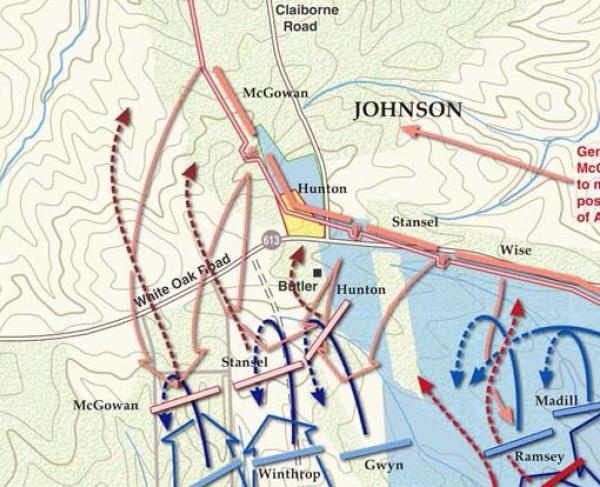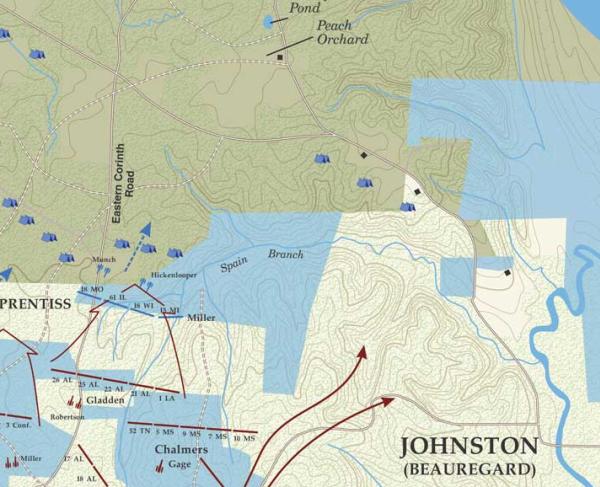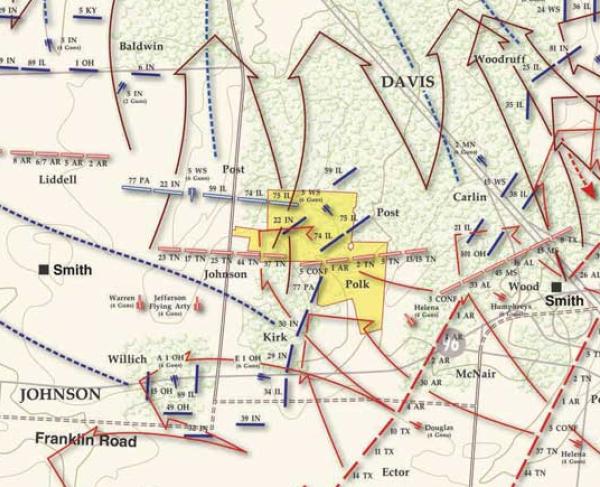
White Oak Road Battlefield, Dinwiddie County, Va.
Look How Far We’ve Come! 44 Acres Transferred to the National Park Service
Four recent transfers to the National Park Service, totaling 44 acres, include an American Battlefield Trust success story 22 years in the making. When we acquired 29 acres at White Oak Road in 2001, the smaller boundary of Petersburg National Battlefield precluded its transfer. But through patience and an act of Congress, it’s now the property of the American people, as are additional Trust-saved lands at Shiloh and Stones River in Tennessee.
29 acres at White Oak Road Battlefield
On March 31, 1865, in combination with Maj. Gen. Philip Sheridan’s cavalry thrust via Dinwiddie Court House, Maj. Gen. Gouverneur Warren directed his V Corps against Confederate entrenchments along White Oak Road, hoping to cut General Robert E. Lee’s communications with his men at Five Forks.
The 29 acres now owned by Petersburg National Battlefield are crucial to understanding and interpreting the initial phases of the battle where severe fighting occurred and three undersized Confederate brigades managed to turn the Federal left flank and drive two Union divisions from the field in what A. Wilson Green calls “a remarkable tactical achievement.” When the Union’s counterattack succeeded, Confederate forces retreated across this very land.
In their push forward, the Union troops had gained possession of White Oak Road west of the Confederate entrenchments and successfully cut off Lee’s ability to later support Maj. Gen. George Pickett and Maj. Gen. W.H. Fitzhugh Lee at Five Forks, setting the stage for a Union victory there on April 1.
7.69 acres at Shiloh, Tenn.
In rapid succession, the Trust transferred two properties to Shiloh National Military Park. The smaller, at 1.88 acres, figured into the late morning fighting on April 6, 1862, when the 5th and 9th Mississippi, part of Brig. Gen. James Chalmers’ brigade advanced over this tract to engage the 54th Ohio and 55th Illinois from Col. David Stuart’s brigade of Brig. Gen. William T. Sherman’s division. Stuart’s regiments managed to hold on against the Confederate onslaught for about 90 minutes before they withdrew.
The larger, 5.81-acre property is in the rear area where the initial Union camp established at Pittsburg Landing prior to the battle. On the night of April 6, 1862, exhausted Union soldiers took refuge here behind Union Brig. Gen. Ulysses S. Grant’s Last Line, even as they general pledged he would “Lick ’em tomorrow though.”
6.17 acres at Stones River, Tenn.
Also now part of a national park are a little over 6 acres associated with fighting on the final day of the Battle of Stones River on January 2, 1863. As a Confederate attack pushed toward the ford, they came within range of 57 Union cannon massed on the west side of the Stones River. Maj. Gen. Thomas George Crittenden watched as his guns went to work, later reporting: “[Brig. Gen. Horatio] Van Cleve’s Division of my command was retiring down the opposite slope, before overwhelming numbers of the enemy, when the guns...opened upon the swarming enemy. The very forest seemed to fall...and not a Confederate reached the river.”
We’re especially pleased to secure this tract as rapid development has impacted most of the battlefield that lies beyond the park’s boundaries with detrimental effects on the history viewsheds from within the park. This saved acreage is also adjacent to another recently protected 42-acre tract that will also help ensure the preservation of this section of the battlefield.


